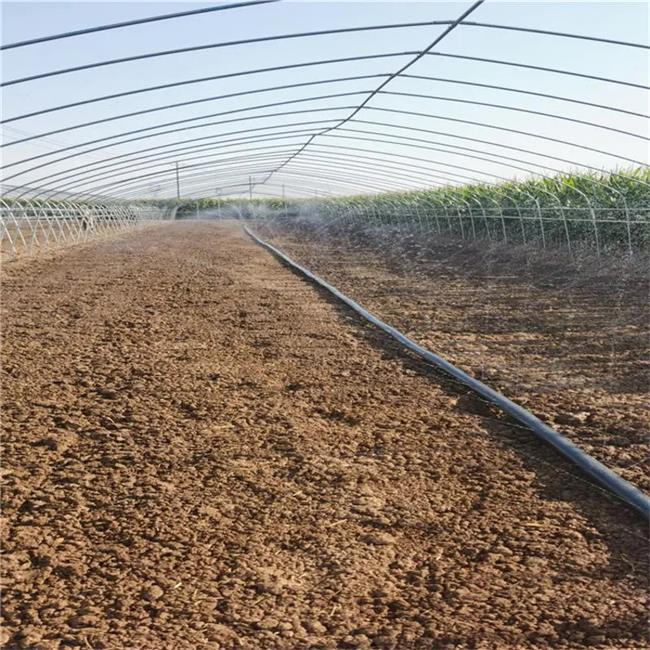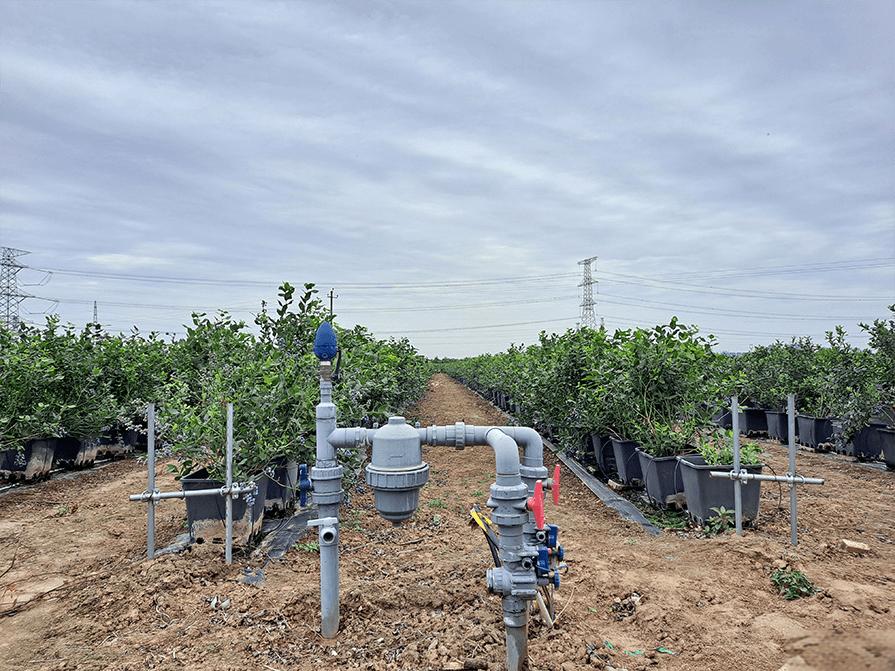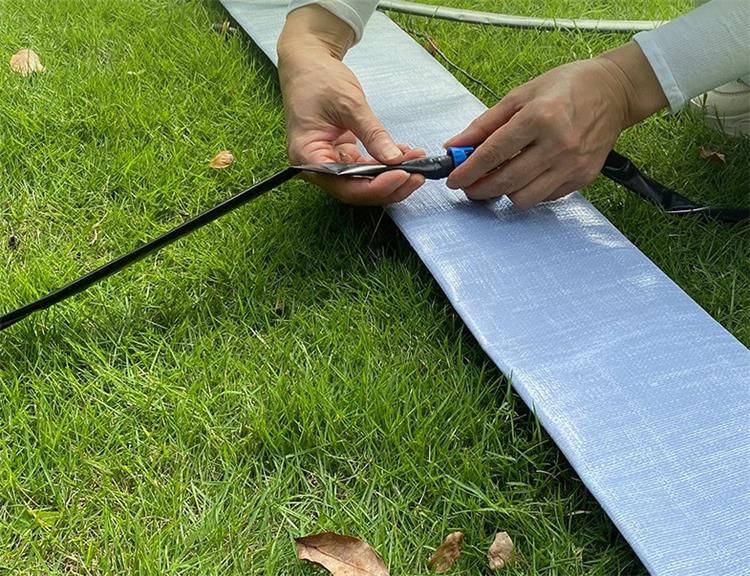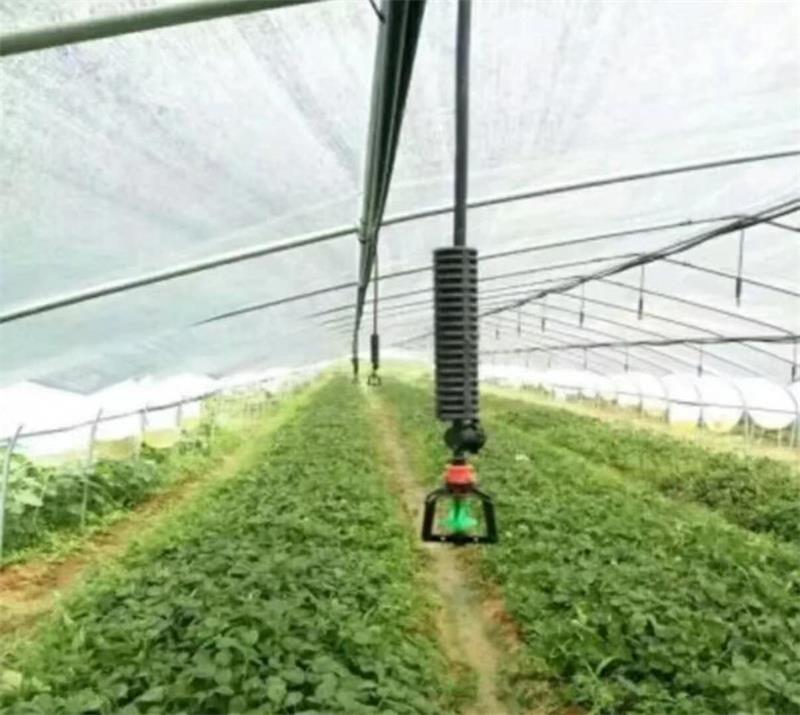Low-pressure pipeline irrigation is a water-saving and energy-efficient irrigation technology that has developed rapidly in recent years.
It involves pressurizing irrigation water through artificial means or natural pressure and then delivering it to the field water hydrants via a low-pressure pipeline network. The working pressure range is between 0.2 and 0.20 MPa (megapascals).
The pipeline water delivery system occupies little space, has strong applicability, and is easy to manage, reducing water seepage and evaporation losses. However, many irrigation districts have not put these systems into normal use due to various reasons such as management issues and inadequate field irrigation technology.
In reality, low-pressure pipeline irrigation only solves the water delivery problem. Most areas still use traditional furrow and border irrigation methods, which have large water quotas and poor irrigation quality, leading to serious water wastage. Additionally, these methods often result in soil over-saturation and waterlogging damage to crops after irrigation.
To address this, we can increase the pipeline water supply pressure without changing the low-pressure pipeline system layout and complement it with Porous Micro-Spray Tape irrigation technology. This involves connecting Porous Micro-Spray Tape to the water hydrants of the low-pressure pipeline system. Compared to furrow and border irrigation, this method is simple to operate, saves water and energy, and ensures a higher irrigation uniformity.
System Composition
Porous Micro-Spray Tape is a black, thin-walled plastic hose with a diameter of 40mm that can be flattened. The tape typically has a wall thickness of 0.25mm to 0.30mm, with five rows of longitudinal holes—one row on top and two rows on each side. The longitudinal hole spacing is 100-300mm, the transverse hole spacing is 10mm, and the hole diameter is 1mm. The maximum installation length can reach 100 meters.
Hydraulic Characteristics
The flow variability coefficient is CV = 6.33%, and the relationship between pressure and flow is q = 27.36h, where q is the flow rate in L/min and h is the pressure in meters. At a working pressure of 3-5 meters, the Micro-Spray Tape flow rate is 50-65 L/min, with a spray range of 1.5-3 meters and a spray height of 1.6-2.3 meters. The minimum burst pressure is 16 MPa (megapascals).
The Porous Micro-Spray Tape operates at low pressure, generally 3-5 meters, resulting in minimal impact on crops, thus preventing damage. The sprayed water forms a fine mist along the tape’s direction, ensuring uniform water distribution and increasing the field water utilization coefficient.
Usage Method
- Spacing Layout: The spray range of micro-holes is between 1.5-3 meters. To ensure high irrigation uniformity, the Micro-Spray Tape should be spaced at 3 meters, with one tape per furrow.
- Matching Quantity: The quantity of Micro-Spray Tape depends on the output of a single well. For a well outputting 40 cubic meters/hour, three sets are needed, each with 6-8 tapes (10 meters). For a well outputting 25 cubic meters/hour, three sets with 4-5 tapes each are used alternately.
- Water Distribution Device: Due to the large flow rate at the low-pressure pipeline outlet, a section of 11mm diameter water distribution hose is needed after the outlet hydrant, with a water distribution outlet every 3 meters. The outlet is made with a distribution reducing tee (110x40mm). The tee outlet and the Micro-Spray Tape are connected using quick connectors. The Micro-Spray Tape can be used in clusters or individually.
- Pressure Adjustment Device: Current low-pressure pipeline outlets usually have a head of 0.2-0.5 meters, insufficient for normal Micro-Spray Tape operation. Therefore, the existing water pump and pressure regulating pipe need adjustments and modifications. The pump head should meet the condition that the farthest outlet in the low-pressure pipeline achieves a working head of 6 meters (considering the along-the-way loss of the Micro-Spray Tape). The pressure regulating pipe should be installed at the farthest hydrant from the well to avoid frequent relocation. The height of the regulating pipe generally needs to be 6 meters, connected with a special tee on the outlet hydrant using a hose.
In conclusion, using Porous Micro-Spray Tape irrigation in conjunction with a low-pressure pipeline system provides a highly efficient, water-saving, and uniform irrigation method, significantly improving the effectiveness of agricultural water management.




